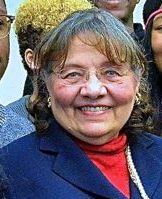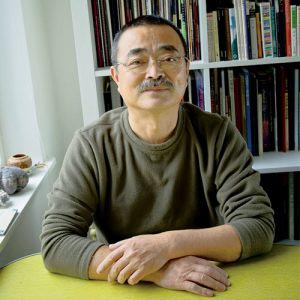
Racine is a city in and the county seat of Racine County, Wisconsin, United States. It is located on the shore of Lake Michigan at the mouth of the Root River, situated 22 miles (35 km) south of Milwaukee and 60 miles (97 km) north of Chicago. As of the 2020 census, the city had a population of 77,816, making it the fifth-most populous city in Wisconsin. It is the principal city of the Racine metropolitan statistical area. The Racine metropolitan area is, in turn, counted as part of the greater Milwaukee combined statistical area.

Belmont University is a private Christian university in Nashville, Tennessee. Descended from Belmont Women's College, founded in 1890 by schoolteachers Ida Hood and Susan Heron, the institution was incorporated in 1951 as Belmont College.

Aaron Douglas was an American painter, illustrator, and visual arts educator. He was a major figure in the Harlem Renaissance. He developed his art career painting murals and creating illustrations that addressed social issues around race and segregation in the United States by utilizing African-centric imagery. Douglas set the stage for young, African-American artists to enter the public-arts realm through his involvement with the Harlem Artists Guild. In 1944, he concluded his art career by founding the Art Department at Fisk University in Nashville, Tennessee. He taught visual art classes at Fisk University until his retirement in 1966. Douglas is known as a prominent leader in modern African-American art whose work influenced artists for years to come.

Vanderbilt Peabody College of Education and Human Development is the education school of Vanderbilt University, a private research university in Nashville, Tennessee. Founded in 1875, Peabody had a long history as an independent institution before merging with Vanderbilt University in 1979. The school is located on the Peabody Campus of Vanderbilt University in Nashville. The academic and administrative buildings surround the Peabody Esplanade and are southeast of Vanderbilt's main campus.

Diane Judith Nash is an American civil rights activist, and a leader and strategist of the student wing of the Civil Rights Movement.

Red Grooms is an American multimedia artist best known for his colorful pop-art constructions depicting frenetic scenes of modern urban life. Grooms was given the nickname "Red" by Dominic Falcone when he was starting out as a dishwasher at a restaurant in Provincetown and was studying with Hans Hofmann.

Gus Lafayette Baker was a painter, illustrator, photographer and lecturer.

Akio Takamori was a Japanese-American ceramic sculptor and educator. Takamori often incorporates human forms into his creations.

Robert Carston Arneson was an American sculptor and professor of ceramics in the Art department at University of California, Davis for nearly three decades.

Robert Brady is an American modernist sculptor who works in ceramics and wood. Born in Reno, Nevada, he has made his home in the San Francisco Bay Area for many decades. Brady is a multi-faceted artist who works in ceramics, wood, painting, and illustration, and is best known for his abstract figurative sculptures. Brady came out of the California Clay movement, and the Bay Area Arts scene of the 1950s and 1960s, which includes artists such as Peter Voulkos, Viola Frey, Stephen de Staebler, and Robert Arneson who was his mentor and teacher in college.

John Lawrence Seigenthaler was an American journalist, writer, and political figure. He was known as a prominent defender of First Amendment rights.

William Underhill was an American sculptor.
Sylvia Hyman was an American ceramic artist, art teacher and visual artist. She was known for her lifelike ceramic pieces and sculptures which are included in the collections of museums worldwide. Her trademark pieces, which were fashioned from stoneware or porcelain, often used the artist technique of trompe-l'œil to create the realism of art. Much of Hyman's work featured everyday objects, such as paper, books, or food, realistically crafted from ceramic. She was also the founder of the Tennessee Association of Craft Artists (TACA).
Barbara Sorensen is an American artist. Her sculptures and multimedia installations mimic geological formations and natural landscapes, and are made from clay, metal, and resin. Sorensen works from art studios in Snowmass Village, Colorado and Winter Park, Florida.
Annette Corcoran is an American artist who was born in Inglewood, California. She earned a B.A. from the University of California, Berkeley in 1952, and continued post-graduate studies at California State University, Long Beach, California Polytechnic State University, Saddleback College, and the College of Marin.
Jack Earl is an American ceramic artist and former teacher, known for drawing inspiration from his home state of Ohio to create rural pieces “with meticulous craftsmanship and astute details… to where you could smell the air, hear the silence and swat the flies.” Although his works hint at highly personal, intellectual, and narrative themes in an almost unsettling manner, Earl is “a self-described anti-intellectual who shuns the art world." He is known particularly for using his trademark format, the dos-a-dos : “This art form is like a book with two stories… the two seemingly incongruent images prompt the viewer to fill in the conceptual gap through poetic speculation.” His work often involves dogs or the character “Bill”, who is said to be a combination of Earl’s father-in-law, himself, and others. The titles to his pieces are typically lengthy, stream-of-consciousness narratives that suggest the folk or rural lifestyle. These are intended to add another dimension to the artwork. His work has received a notable response over his decades-long career, especially since he is regarded as “a master at reminding us that within the events we take for granted are moments of never-ending mystery and wonder.” Earl continues to live in Lakeview, Ohio with his wife, Fairlie.
Richard Shaw is an American ceramicist and professor known for his trompe-l'œil style. A term often associated with paintings, referring to the illusion that a two-dimensional surface is three-dimensional. In Shaw's work, it refers to his replication of everyday objects in porcelain. He then glazes these components and groups them in unexpected and even jarring combinations. Interested in how objects can reflect a person or identity, Shaw poses questions regarding the relationship between appearances and reality.
Kurt Weiser is an American ceramicist and professor. His work—explorations of the relationship between man and nature through narratives rendered in vivid color—are described as "Eden-like." His work has often taken the form of teapots, vases, and cups, though he has recently begun crafting globes as well. Weiser is currently the Regents Professor at Arizona State University's School of Art.
Chris Gustin is an American ceramicist. Gustin models his work on the human form, which is shown through the shape, color, and size of the pieces.
Karl Martz was an American studio potter, ceramic artist, and teacher whose work achieved national and international recognition.











